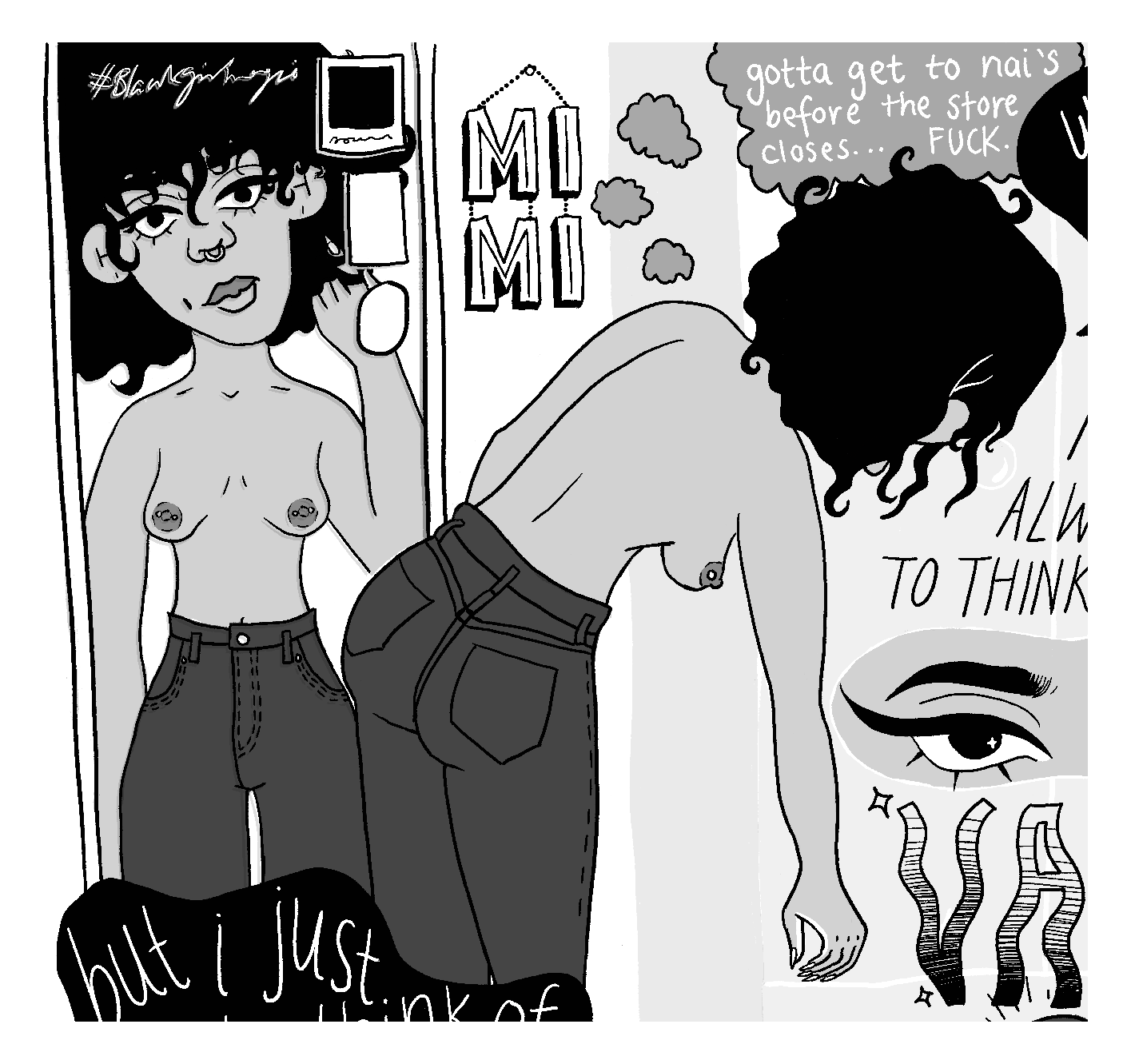
Although the fashion industry is arguably one of the most dominant industries in the world, its glitz and glamour tends to override what goes on behind the scenes.
During the week of SAIC’s Commencement ceremony, the Fashion Department holds an annual fashion show, a virtual reception in the case of this year’s event, showcasing the thesis collections designed by the graduating class. While the audience of the show is comprised of families, friends, students, and fashion enthusiasts who are eager to see the collections, what they fail to see is the blood, sweat, and tears that went into making it happen.
Sherry Hu is one of the designers in this year’s virtual reception, but the journey to get there was not easy. As her concepts were constantly rejected by her professors, Hu went through many iterations before landing on her final concept. She was able to create a successful and innovative collection focusing on aesthetic and comfort, along with the merging of traditional aspects with modernism within her garments. Before Hu embarks on a new journey, I was lucky enough to catch her for an interview about her thesis collection.
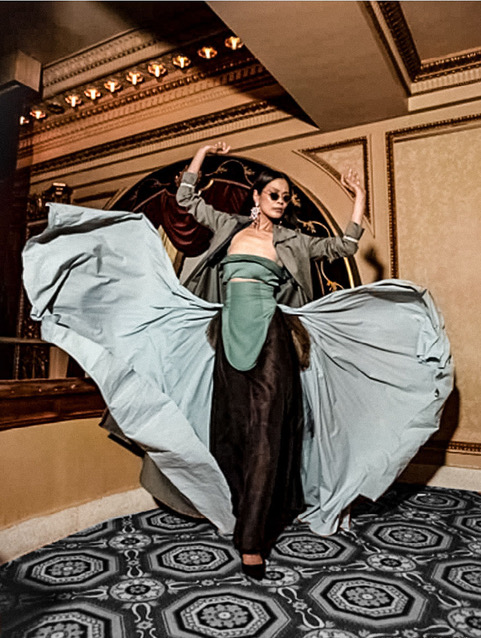
Emily Chae: For your final collection you designed a series of eight garments, each with a very particular mode, yet with underlying similarities, specifically within the designs of the jackets. What was the concept for your collection?
Sherry Hu: My collection focuses on the equilibrium between aesthetic and comfort. My clothing ties super close to the human body, with different garments representing different social aspects, culture, and traditions. I select elements that best represent my concepts, collage them, and rearrange them to a new art piece. The reiteration of the details enhances my idea and makes the main idea clear and concise.
My collection appreciates the traditional bespoke jacket-making techniques that have been passed down for hundreds of years. The collection is entirely constructed with organic material, silk, wool, and cotton. I want my collection to indicate traditional craftsmanship, and embellish it with a modern concept that describes mundane daily life. Besides the artistic approach, wearability is essential to my garments.
EC: Your collection is indicative of a very particular historical aspect of fashion — traditional jacket-making craftsmanship. How did you form this concept?
SH: It comes from a story that I heard from my friend at work. People need to represent themselves properly in an office space, not just wear clothes that fits the dress code. One of my friends went to work with some cheaply-made fast fashion blazer with a Ferragamo tie, his supervisor went to him and said, “Not to make you feel bad, but how do you feel when your tie is more expensive than the entire look?” He only said that to be nice, to alert him to dress more properly. We often think people are not that superficial, or that modern fast fashion can be an escape to hide our real financial problem, but in fact people still judge you based on what you wear. For some jobs in the business field, your outfit represents how successful you are.
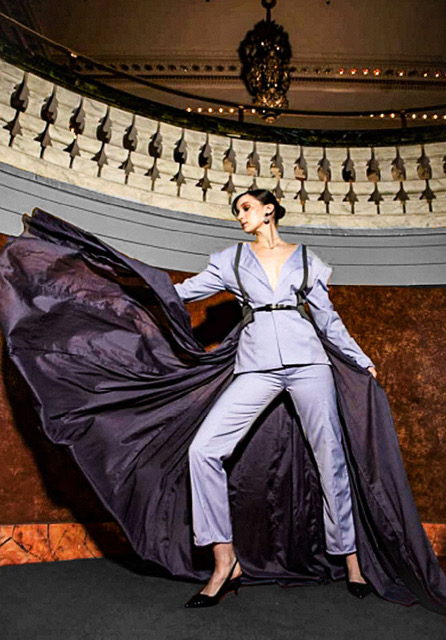
EC: It’s really interesting how you merge modernism with traditionalism in situations where the social aspect derives from a different culture from which you are integrating it with. How do you approach an appropriate concept that will be respectable to both cultures?
SH: I try to talk about traditionalism and modernism through [my work’s] different silhouettes. For the designs to deviate from traditional wear, that is an indication of modernism. I deconstructed the constructed form, and separated them into layers and design lines that enhance certain body parts like shoulders, which is a combination of modernism and traditionalism.
I don’t necessarily think that culture influences the social aspects that much. No matter what society you are living in when it comes to business, it is pure money-driven capitalism. In some cultures this ambition is proper to not be spoken of loudly, but deep inside everyone is the same. You cannot escape this system and never-ending bureaucracy anywhere.
EC: What inspired your color and pattern palette for this collection?
SH: My color story is inspired by my mood board. The mood board tells a story of mundane city life and toxic office culture, while the color of the garments represents the traditional office wear that people always expect.
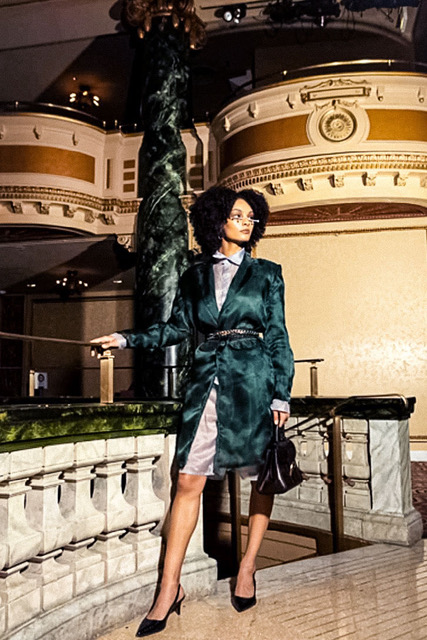
EC: A lot of your designs are reflective of traditional business attire (e.g. blazers), but with a twist. What inspired you to design a collection with business attire elements?
SH: When it comes to garment-making, people always think extravagant gowns are the hardest to make, but in fact, jackets are the hardest. I want to contribute my senior year to explore craftsmanship. On top of that, my collection also talks about people who are empowered. Financial power is the most visible form of power, and people who wear office wear shows they work and have a source of income, which also can be their source of power.
EC: Is your collection targeting those who work in an office setting?
SH: Not necessarily. I think it is for people who want to feel empowered.
EC: In your final collection, you wrote, “Modern employment is a form of wage slavery,” which is the idea behind your collection. With COVID-19, many offices are running remotely, therefore business attire is no longer a required dress code. How do you see your collection changing to adapt to the transition?
SH: Even though most businesses are online now, when you have a meeting with your client, they still expect you to dress up formally to show your proficiency. I don’t think my garment has anything to do with physical comfort, this collection presents the best of you. The purpose of the blazer is for you to have a better appearance.
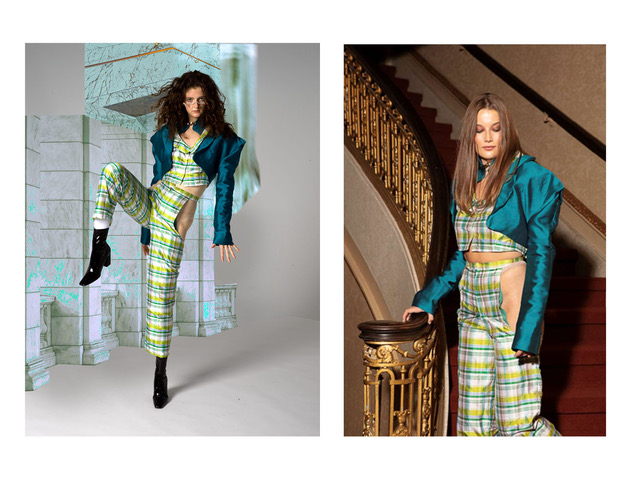
EC: As a response to an earlier question, you mentioned that your collection “focuses on the equilibrium between aesthetic and comfort.” Does this concept derive from a personal inability to find clothes that are fashionable yet comfortable?
SH: I have no trouble finding clothes that are fashionable and comfortable. As a designer especially in SAIC, I always struggle between making sculptural garments or wearable garments. I want to create garments that are both wearable and tell stories.
EC: New York City is one of the hubs for fashion. Do you think studying fashion in Chicago has limited your creativity?
SH: To be honest, our school’s fashion program is not the best, but that should not be an excuse for bad designs. Some designers never went to fashion school or art school. It is always how you want yourself to be. Every school has super talented designers. The professors that I had here in SAIC — Rey, Abigail, and Pam — they are seriously the best professors that could ever be asked for. The limitation really comes from when we source the materials, when we do not have the Garment District in NYC, we have very limited choice of fabrics and we have to get everything shipped which is very inefficient.
EC: What do you hope to see change in the fashion industry?
SH: Definitely sustainability. When you buy a shirt at Primark, Zara, or Urban Outfitters, the cost of production is less than $1 and that includes fabrics and labor. While people in developed countries are trying to explore more styles, the workers on the other end of the earth are suffering from extreme underpayment.



